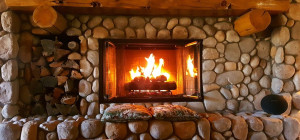 Chimneys, especially masonry chimneys require caps or hats. They are also called crowns. The crowns are available in the market. But homeowners can also construct them from scratch.
Chimneys, especially masonry chimneys require caps or hats. They are also called crowns. The crowns are available in the market. But homeowners can also construct them from scratch.
In this article, I'll discuss chimney crowns. The commercial chimney crowns are not always properly built. Most of the times, they are built poorly. Many crowns contain a mortar wash that's too thin. As a result of this, the mortar undergoes erosion quicker than it is supposed to.
Water damage
Masonry chimneys do suffer from water penetration. The freeze and thaw cycle causes more damage that homeowners expect them to cause. Not only a masonry chimney, but a steel chimney may also suffer from this type of damage.
A chimney crown stops the water from penetrating into the layers of mortar, which is the lifeline of the brickwork. The crown also keeps the flashing intact, which protects the waterproof seal.
Follow the guidelines
You can buy or build a crown. If you are building it yourself, follow the guidelines below:
- The thinnest area of the precast concrete crown cannot be less than 2-inches thick.
- Make sure the crown doesn't have mortar in it as the material.
- The concrete crowns you are using, must be cast-in-place.
- The extension of the crown beyond the outside of the chimney wall shouldn't be less than 2½ -inches.
- You need to place the crown in an ascending manner from the flue liner to the chimney wall's edge.
- You need to place a sealant between the crown and the flue liner.
- The dissimilar materials of a masonry chimney keep expanding. The masonry and the crown should have a bond break between them to accommodate differential expansion.
Following these guidelines will uncomplicate the work for you.
Select crown type
Select the crown type carefully because not all build materials offer the same degree of resilience. Homeowners often go for the precast concrete crowns because they come with few advantages like ease of installation and consistency in quality and performance. But there are many other crowns apart from precast crowns.
Cast-in-place crown
Concrete crowns are used widely by the homeowners. A cast-in-place crown has a form filled with concrete and built on top of the chimney. The homeowner can use steel to increase the durability. The crown allows for water runoff and extends almost 1-inch to 1½ -inch beyond the chimney.
Cut stone crown
A cut stone crown is usually made of limestone. A manufacturer first cut and fashion a limestone and then set it on top of a chimney. Mostly the old masonry chimneys display cut stone chimney crowns. The cut needs to be in perfect sync with architectural requirements.
The thickness is between 1½ and 4-inches. The length of the drip edge is 3-4-inches. The problem with a stone crown is it is expensive and requires skilled labors and sophisticated equipment for manufacturing and installation. The benefit of a cut stone crown is it makes the chimney ornamental and lasts for over hundred years.
The right form
The length of the right form is 2 to 8-feet. The length of the form determines the highest length of the crown. If the form is longer than 8-feet and the chimney size is 16×16-inch, then nearly 5-feet of the form will stand out.
The right form also conveniently attaches itself to the chimney and makes it trouble-free for a homeowner to remove it. When shopping for a right form, check if its corners have small ½ x ½ -inch tabs. By choosing this form, you can make sure it'd surround the masonry's outside edges the concrete would cover only its tabs. If you ever need to strip it out, you can do that quite easily.
Drip edge
A form should have drip edges. In case it doesn't, you'd have to use a bead of caulk and put it on the form. Manufacturers recommend the distance between the chimney wall, which is under the crown and the drip edge to be at least 1-inch.
Support system
A crown should have a strong support system. Pouring concrete without a support system would result in the chimney getting filled. A bond break is a support system between the concrete and the masonry. Galvanized sheet metal with roofit felt on top is an ideal material for a bond break. Not having a bond break means the masonry and the concrete expanding at different rates, which is not good for the chimney.
You know enough
Assuming you've read the article from beginning to end, you've known enough. Now pick a crown that's visually enticing and good for your chimney.
Contributed By: www.jamesthesweep.co.uk







